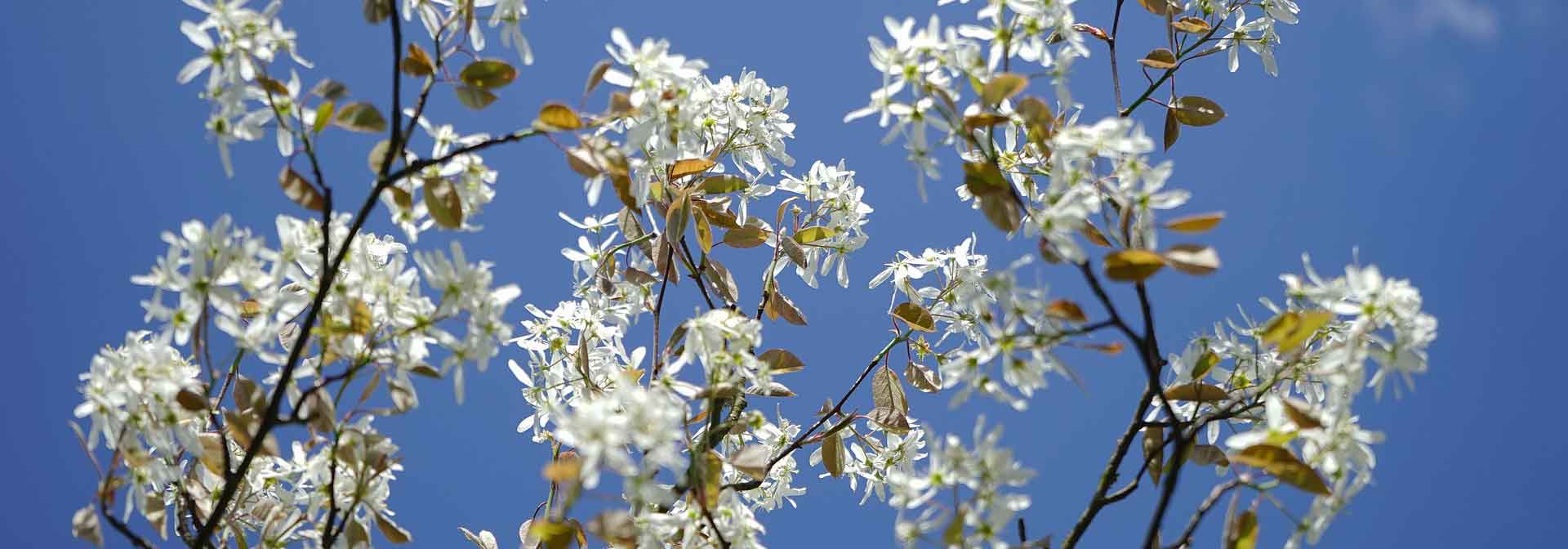
Amelanchier: planting, pruning, growing
Contents
Amelanchier in a nutshell
- Its spring flowering is abundant and spectacular
- Its silhouette is slender and elegant
- Its fruits are edible and decorative
- Its foliage with spicy colours ignites the garden in autumn
- Hardy down to -25°C, it is easy to grow in hedges, borders or as a specimen
A word from our expert
The Amelanchier is a spring-flowering bush that heralds the arrival of fine weather and gently announces the end of winter. In the garden, it is among the first to bloom. Still too little known, whether it be the Amelanchier lamarckii, A. canadensis or Canada serviceberry, Amelanchier ‘Ballerina’, or Amelanchier laevis, all deserve to be more widely grown for their remarkable ornamental qualities from spring to autumn as well as for their edible and decorative fruiting.
The deciduous foliage of this bush is also very decorative. Green or bronze at birth, it takes on a stunning autumnal colouration: its leaves turn red or copper to set the garden ablaze during Indian summer.
Very hardy, down to -25°C when protected from drying winds, and low-maintenance, the Amelanchier is easy to grow in full sun or partial shade in any well-drained, cool soil.
Its compact yet elegant silhouette, generous flowering, and relatively slow growth make it an ideal subject for small spaces as well as for natural gardens where it introduces lovely focal points.
It is perfect for creating beautiful free, rustic, or fruit hedges, as well as being an isolated specimen at the centre of a romantic composition against a backdrop of permanent greenery.
We offer numerous varieties of Amelanchiers for purchase to plant in borders, hedges, or as solitary specimens. Discover everything you need to know about Amelanchiers!
Botany
Botanical data
- Latin name Amelanchier
- Family Rosaceae
- Common name serviceberry
- Flowering from April to June
- Height 2 to 12 m
- Exposure sun or partial shade
- Soil type All
- Hardiness -25°,-30°C
Native to North America, particularly Canada, Eastern Europe, and Asia, Amelanchier grows naturally depending on the species in wet woods for American species, or on rocky and dry ground for Amelanchier lamarckii. It belongs to the diverse family of Rosaceae, which includes Prunus, roses, and strawberries.
The genus comprises nearly 25 species of deciduous trees and bushes, with about ten cultivated in France, including some interesting cultivars. Alongside the type species, the common Amelanchier or A. ovalis, the most commonly found in our gardens is Amelanchier lamarckii or Lamarck’s Amelanchier. There is also Amelanchier laevis, with a spreading and bushy habit that prefers moist soils, A. canadensis or Canadian Amelanchier, large and very dense, and Amelanchier alnifolia ‘Obelisk’, with a narrower, more graphic habit, as well as the very floriferous hybrid of A. laevis, the more compact Amelanchier ‘Ballerina’.
Not to forget Amelanchier x grandiflora and its cultivar ‘Robin Hill’, compact and upright, with white flowers tinged with pink.

In France, Amelanchier acclimatises in most regions, tolerating both dry shade and heavy clay soils.
Amelanchier has a rather slow growth, forming small trees or large bushes depending on the variety, bearing star-shaped flowers, most often white. It is particularly distinguished by its habit and size. While they typically measure 3 to 8 m in height when mature, some can reach up to 12 m high depending on the variety, with a relatively slow growth rate. Amelanchier presents an upright or, conversely, spreading habit, sometimes even bushy with a beautiful density.
Most Amelanchiers naturally form a coppice, meaning several trunks. This silhouette with multiple trunks remains quite compact. In A. lamarckii, the upright stems are covered with a white spring fluff.
It is a bush that layers and propagates naturally, with its creeping branches eventually forming new plants.
Bright, generous, and early, the spring flowering of Amelanchier is spectacular: in the garden, it is one of the first bushes to bloom at the end of winter, when most plants are just beginning to awaken. A sign that spring is settling in, it announces the return of warmth with its fluffy lightness.

The star-shaped flowers of Amelanchier Lamarckii and A. spicata give way to delicious edible berries.
From April to May, Amelanchier is covered with small pure white or pink-tinged star-shaped flowers gathered in abundant pendulous clusters 3 to 15 cm long on more or less arching branches. The Amelanchier spicata is a species that is covered with white flowers in upright spikes. They are melliferous, and some varieties exude a light vanilla fragrance. You can make spring bouquets with its flowering branches when the flower buds are just beginning to open. They last a long time in a vase.
This dense and delicate flowering precedes the foliage, with the first flowers blooming just before the leaves emerge.
At the beginning of summer, these white or pink stars, 1 to 2 cm in diameter with 5 long, well-separated petals, give way to small round edible fruits, the amelanchers that resemble blueberries and are the size of a large pea (7 to 10 mm in diameter). These small sweet, fleshy berries, initially red, then dark purple or bluish-black when ripe, contain a lighter juicy flesh filled with small seeds. They are harvested in summer when they are fully black and before they fall, from July to August.
While they are a delight for birds, they are also very tasty raw or cooked in jams or pies. Still relatively unknown in France, they are widely consumed as sauce or compote in Eastern Europe or Canada to accompany roasted meats. Some varieties A. canadensis, A. lamarckii and A. laevis, are specifically cultivated for this fruiting with a raspberry or grape-like flavour.
The foliage, deciduous, is another asset of Amelanchier, which develops a magnificent foliage from spring to autumn. The leaves of Amelanchier appear after flowering. In a beautiful bronze-pink in spring, then yellow-green or medium green in summer, the leaves adorn themselves with shades of cinnamon orange, copper red, or intense purple as the first coolness arrives before falling.
The oval, elliptical to elongated leaves, sometimes finely dentate (A. ovalis), measure 2 to 8 cm long; in some Amelanchiers, they offer a white fluffy underside in spring, which they lose over the months, while in others like A. ‘Ballerina’, they take on a beautiful glossy appearance.
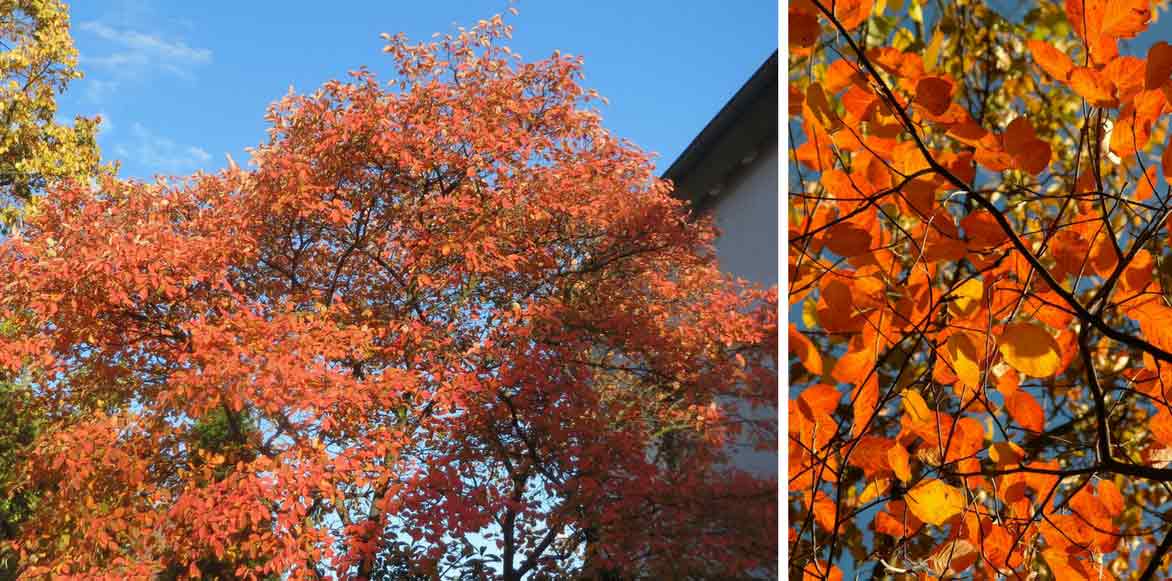
The flamboyant foliage of Amelanchier fills the garden with warm and spicy colours as the days shorten.
Amelanchier, when cultivated under good conditions, is easy to grow and proves to be as generous as it is resilient and low-maintenance. To bloom well, Amelanchier appreciates full, non-burning sun, although it also adapts to partial shade.
While this bush does not fear severe cold, even appreciating it, a rather harsh winter will promote flowering; it does, however, dread drying winds and overly dry soils in summer. Perfectly hardy, it can withstand very low temperatures of -25 °C (sometimes down to -30 °C). This beautiful hardiness guarantees it a long life in all regions. However, it is better to spare it from the Mediterranean climate, which is a bit too hot and dry in summer.
While some American Amelanchiers, A. laevis for example, prefer acidic soils, others like Amelanchier canadensis accept moist soils or, conversely, calcareous and stony soils like Lamarck’s Amelanchier, most will perfectly accommodate any good garden soil as long as it is fresh and well-drained.
Its compact yet elegant silhouette and relatively slow growth make Amelanchier a more versatile shrub than it seems, finding its place in all natural gardens, even in small spaces, forming lovely focal points. Its relatively slow development allows certain species, Amelanchier laevis or A. canadensis, to be grown in large pots while still young. You can thus enjoy its cottony flowering in spring and its magnificent autumn colours on the terrace or near entrances.
It can be cultivated both alone in isolation at the centre of a flowerbed or clearing, or in groups associated with other shrubs, such as in a wild or fruit hedge, in a living hedge. This shrub, which loves acidic soils, is easily associated in the background of a flowerbed, with ericaceous plants with early flowering such as Camellias, Azaleas, Rhododendrons, Sarcococcas, or Daphnes.
It will look stunning alongside flowering and decorative foliage shrubs with which it will be in perfect harmony of tones or, conversely, it will create contrasts; Magnolias, Forsythias, Ribes sanguineum, Spiraeas, Viburnums, garden Philadelphus, Japanese Quince, Prunus…
Species and main varieties
Among the varieties mainly cultivated in our gardens there are about ten species or cultivars: three native to North America (A. laevis with a spreading and bushy habit, A. canadensis very common with a dense and upright habit, and A. stolonifera), one from Asia (A. asiatica), and two from Europe (A. confusa and A. lamarckii, the most common in our gardens, the latter often being confused with Amelanchier canadensis or laevis).
We also distinguish Amelanchier ‘Ballerina’, a more compact variety (5 x 3 m) with larger inflorescences and the species Amelanchier spicata, which is covered in white spike flowers.
Amelanchier alnifolia ‘Obelisk’ differs by having a narrower habit. Amelanchier x grandiflora, of horticultural origin with a sometimes shrubby habit, and its cultivar ‘Robin Hill’, compact and upright, with white flowers having pink-tinted buds, are also interesting.
All possess good hardiness, bloom in spring, and have very decorative foliage. They are mainly distinguished by their habit, spreading or upright, and their size ranging from 3 to 8 m in average height at maturity: A. spicata will not exceed 3 m in height at ripeness, while A. lamarckii can reach 10 m in height with a spread of 12 m.
The most popular

Amelanchier lamarckii
- Flowering time May, June
- Height at maturity 7 m
Our favourite

Amelanchier spicata
- Flowering time May, June
- Height at maturity 3 m
Discover other Saskatoon - Juneberry
View all →Available in 1 sizes
Available in 5 sizes
Available in 2 sizes
Available in 1 sizes
Available in 1 sizes
Available in 1 sizes
Available in 1 sizes
Available in 1 sizes
Available in 1 sizes
Available in 1 sizes
Planting
Where to plant Amelanchier?
It acclimatises well throughout France, except perhaps in Mediterranean climates, which can be too hot and dry in summer. Amelanchier is sensitive to overly dry soils in summer. With good hardiness, it can withstand very low temperatures of -25°C to -30°C, ensuring perfect resilience in all regions.
However, it should be protected from drying winds that may scorch its foliage and damage its flowers. Plant it in a sheltered position in the sun, provided it is not too scorching, or in partial shade in a rather humid environment, although it tolerates dry shade fairly well.
It appreciates any good garden soil that is fresh and well-drained, even clayey or moist, preferably non-calcareous, even slightly acidic.
It forms beautiful, free, and rustic fruit hedges as well as lovely focal points in borders that stand out against a backdrop of evergreen foliage (Forsythias, Cherry Laurel, Viburnum) and introduce an original focal point. It can be associated with ericaceous plants such as Camellia, Azaleas, and Rhododendrons.
When to plant?
Amelanchier can be planted in spring from February to April or preferably in autumn from September to November, to encourage rooting before winter and to enjoy flowering in the first year. Plants purchased as bare roots or in pots can be planted from October to March, avoiding periods of frost or extreme heat.
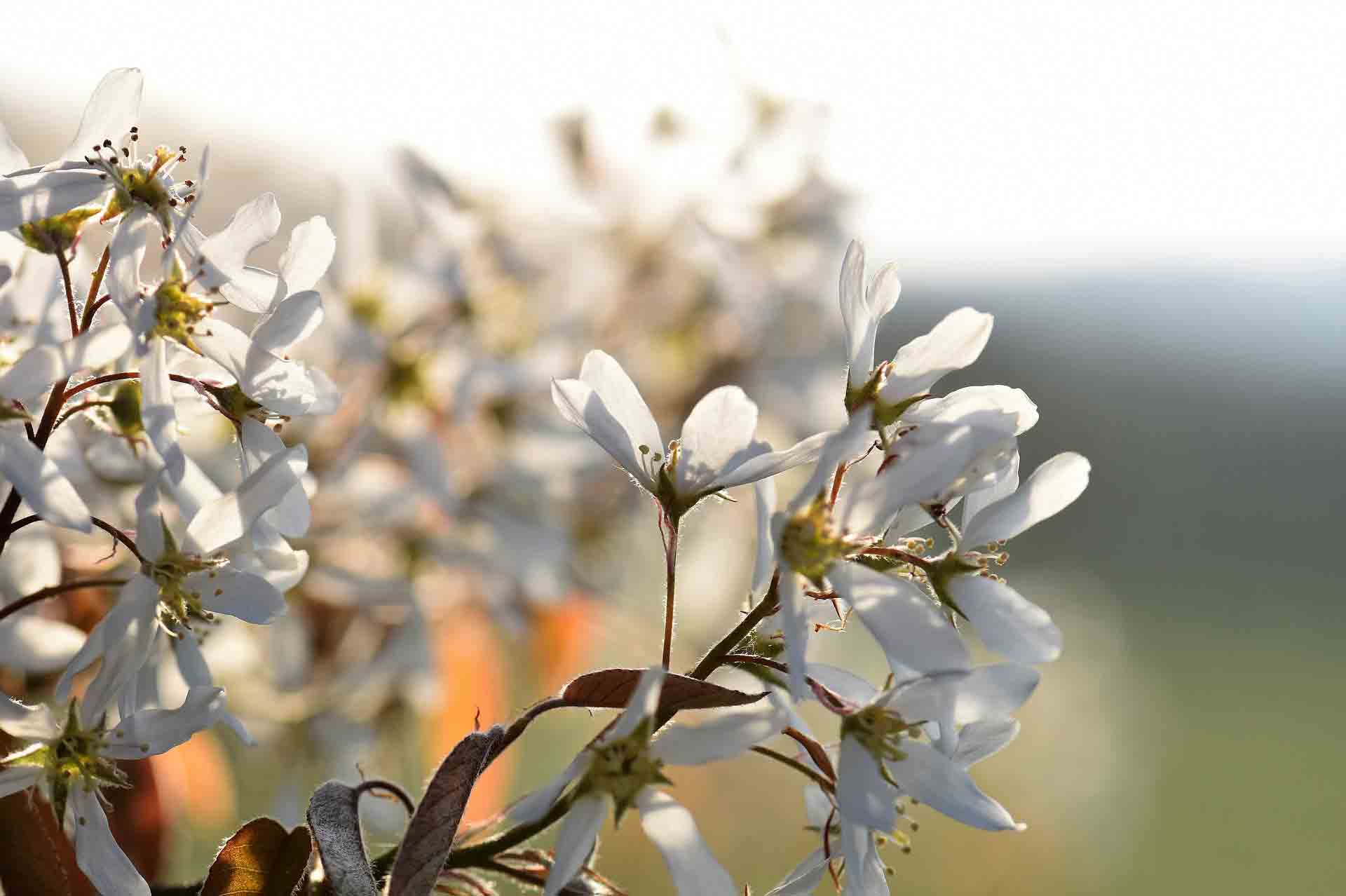 Amelanchier can be planted in hedges as well as in borders in any fresh and well-drained soil[/caption>
Amelanchier can be planted in hedges as well as in borders in any fresh and well-drained soil[/caption>
How to plant Amelanchier?
Amelanchier can thrive in ordinary garden soil.
Depending on the varieties and their use, space the plants 2 to 3 m apart in free hedges, and 4 to 5 m apart when planted individually in all directions. It can also be planted in groups of 3 or 5, in clumps, in spring, which will provide a delightful display.
Stake them. Mulch in spring by spreading a good layer of bark or pine needles at the base of the tree to prevent soil evaporation and maintain some moisture in the soil. Water generously during the first few weeks to encourage establishment, then twice a week during hot weather, especially if your soil tends to dry out easily.
Pruning and care
Amelanchier is an easy-to-maintain bush. These species are often suckering; at the beginning of spring, regularly remove the suckers if you wish to maintain a beautiful habit and a single trunk for your bush; they naturally tend to form multiple trunks (a coppice).
Pruning is neither essential nor necessary, except to rebalance the branches or remove crossed branches after flowering.
Depending on the nature of your soil, in dry weather, monitor the water needs of your bush, especially in the first few years. It is preferable to mulch the base every year, in May.
→ Read also: How to prune Amelanchier?
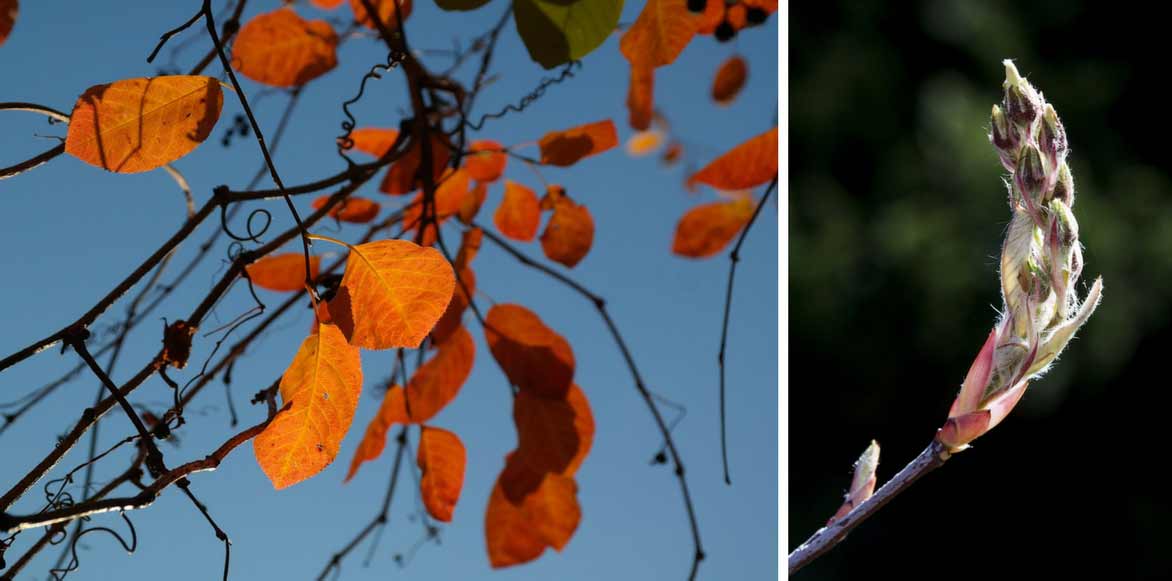 In spring, to stimulate the growth and flowering of your Amelanchier, you can apply an organic fertiliser
In spring, to stimulate the growth and flowering of your Amelanchier, you can apply an organic fertiliser
Pests and potential diseases
Amelanchier is largely resistant to most diseases as well as attacks from insects or parasitic organisms. In some regions, it can, however, fall victim to fire blight, a formidable disease that particularly affects the Rosaceae family and can kill the bush within a few weeks. The bacterium spreads rapidly in warm and humid conditions, between 25 and 30°C. The leaves then develop rust spots, the flower buds dry out and turn brown, and the branches bend and die: the bush appears to be scorched by fire.
There is no curative treatment, so it is essential to prevent attacks and stop contamination by cutting 20 to 30 cm below the affected parts, then burning all the affected sections and spraying a copper-based solution (in moderation) or preferably Bordeaux mixture or a horsetail decoction in spring (March-April) as a preventive measure.
If the weather is mild and humid, the bush may be prone to powdery mildew: spray with a sulphur-based fungicide or nettle manure or a horsetail decoction.
→ Learn more about the diseases and pests of Amelanchier in our advice sheet!
Propagating
If Amelanchier can be multiplied by sowing, we recommend propagation by cuttings, air layering, or sucker separation, all of which are simpler methods that yield good results.
By cuttings
Propagation of Amelanchier can be done using herbaceous or semi-woody cuttings (that is, from stems that transition from softwood to hardwood) in August-September under mist. After flowering, take cuttings of 10 to 20 cm.
Plant them in a light, well-draining substrate kept moist. Place them in buckets as soon as the cuttings have formed roots. Winter them in a frost-free environment. Transplant them into the ground the following autumn.
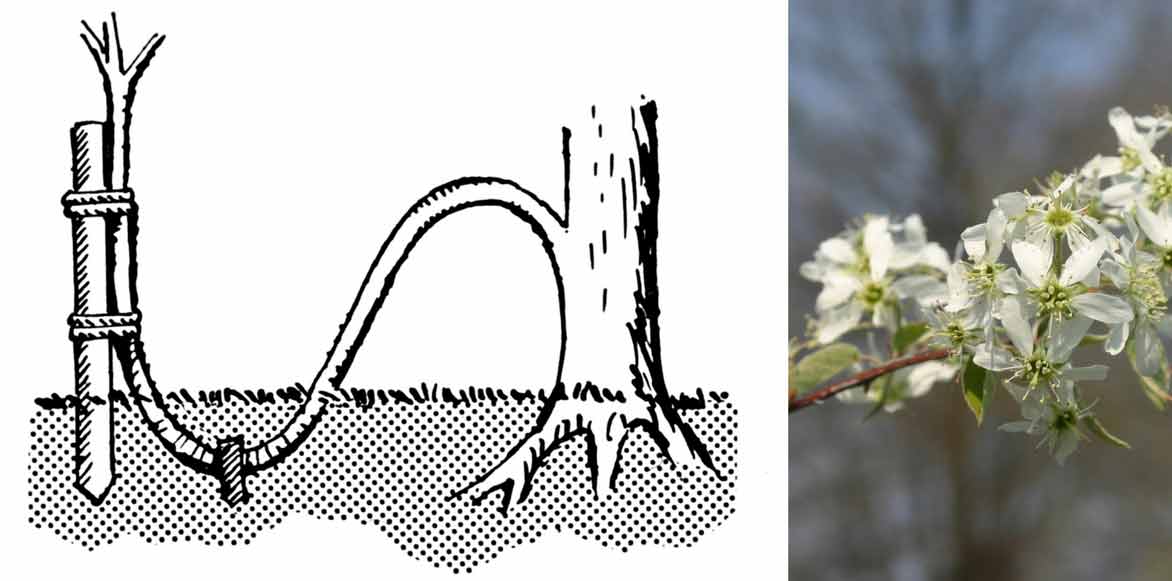
Layering the Amelanchier is simple and allows for obtaining a new plant identical to the mother plant
By layering
The root development of layers is quite slow, so be patient!
- At the end of summer, lower one of the branches at the base of the tree where it naturally touches the ground
- Remove leaves and branches from this part of the stem
- Scrape the bark over 5-10 cm with a small knife
- Dig a furrow in the soil near the mother plant
- Lay the branch in the furrow and bury part of it to encourage rooting
- Fill in the furrow and secure the layer with two metal hooks
- Raise the end and stake the aerial part
- The following spring, you can separate the layer from the mother plant when it has enough roots and replant it in the ground
By separating suckers
As Amelanchier often tends to produce suckers, that is, to emit new shoots around the mother plant, this method of propagation is very simple. Between late November and early March, separate the numerous shoots (the suckers) that have developed. With a spade, cut the root as close to the mother plant as possible. Transplant these young plants directly into the ground in well-drained, well-composted soil.
→ Learn more in our advice sheet How to propagate Amelanchier by cuttings.
Associating
Amelanchier offers two seasons of interest: in spring when it is covered with its white flowers and bronze foliage, and in autumn when its leaves turn to fiery red and copper.
To fully enjoy its beauty, plant it as you wish, in a free hedge, as a specimen, or in a mass with other bushes and bulbous plants against a backdrop of permanent greenery made up of conifers and evergreen bushes that will highlight the delicate beauty of its flowers in spring and its flamboyant foliage in autumn.
This delicate bush, essential in spring scenes, finds its place in natural gardens, in the middle of a bright clearing, surrounded by spring bulbs such as daffodils, squills, hyacinths, and botanical tulips.
Japanese flowering cherry, ornamental apple, flowering currants, or Japanese quince are good companions, as are magnolias, white lilacs, garden mock oranges, early roses, flowering dogwoods, and deciduous azaleas that will accompany its flowering with their delicate hues. It can be associated with spring shrubs like Forsythia. Some may support a soft pink clematis or a purple vine.
It is also perfect in a heather soil mass, alongside evergreen or early-flowering shrubs; Camellia, deciduous azaleas, Rhododendrons, Sarcococca, Japanese Andromeda, or Daphne.
In autumn, its leaves with copper or purple flames will classically respond to the bright orange berries of a Cotoneaster or other decorative fruit trees (link) like a Sorbus from Kashmir.
Alongside flowering shrubs and those with decorative foliage, it will play harmoniously with tones or, conversely, create contrasting effects; Spiraea, Viburnum, blood dogwood, and spindle…
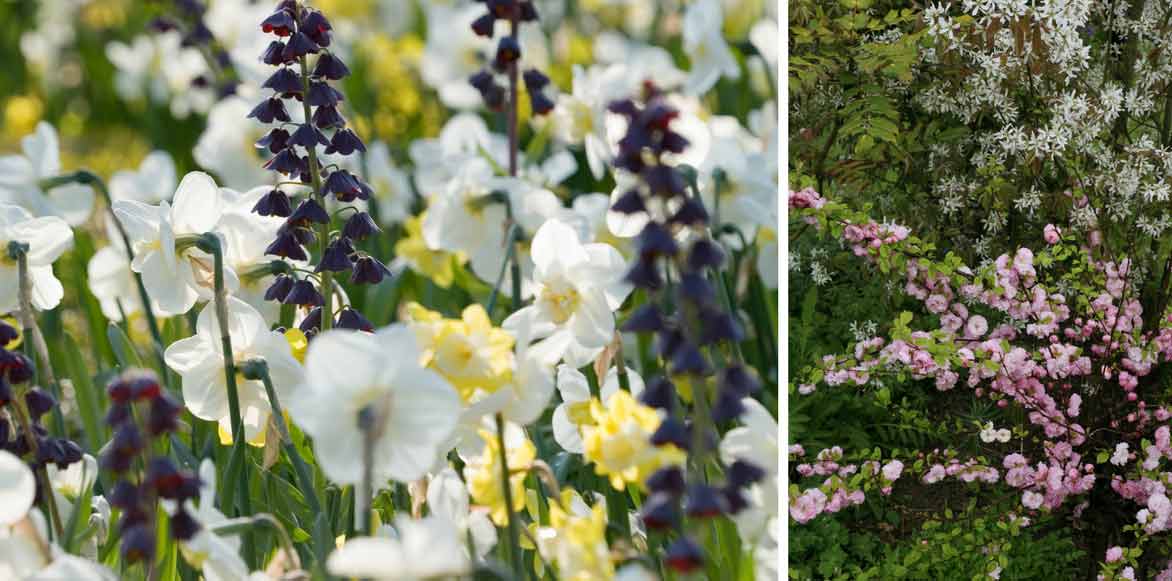
Amelanchier lamarckii – Fritillaria persica – daffodil – Prunus – Credit Photo GAP: Graham Strong – Pernilla Bergdahl
→ Discover more ideas for pairing with Amelanchier
Useful resources
Discover our wide range of bushes for hedges: ideal varieties to accompany Amelanchier.
Find out how to harvest and preserve Amelanchier fruits.
Discover our advice sheet on ideas for companion planting with Amelanchier.
Check out our tips for growing Amelanchier in pots.
Find your article: Choosing an Amelanchier.
Frequently asked questions
-
Are the leaves of my Amelanchier turning white, is that normal?
No, your bush is certainly affected by powdery mildew. If some leaves and shoots show a floccose white fluff, you can limit the spread by removing and burning the diseased leaves. Then, carry out sprays with nettle manure or a horsetail decoction as a curative measure, but also as a preventive measure.
-
How are Amelanchier fruits consumed?
The fruits of the service tree, or service berries, are consumed like blueberries, which they resemble: they can be eaten raw, but are more flavourful when cooked. You can use them in jams, compotes, creams, incorporate them into pies or clafoutis, and even make a sauce to accompany meats. It is also possible to dry or freeze these delicious berries.
- Subscribe!
- Contents































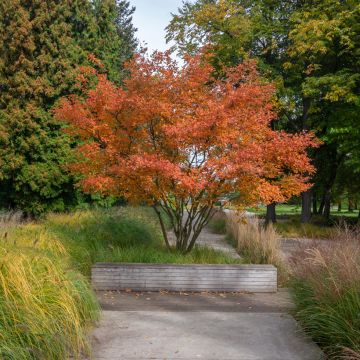

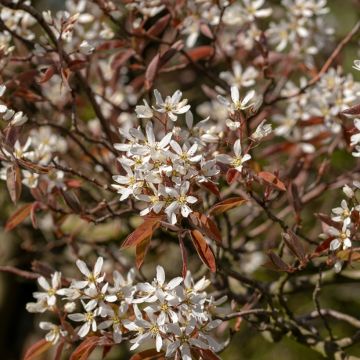
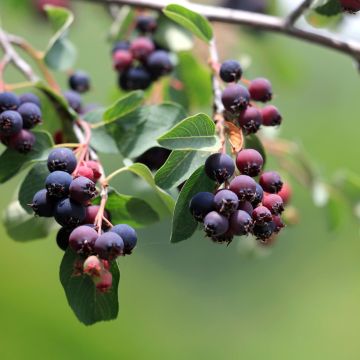

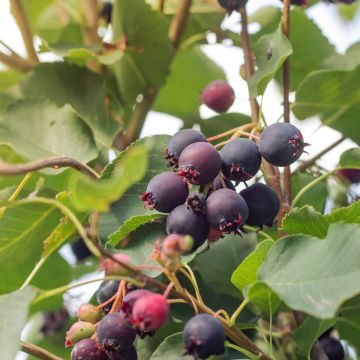
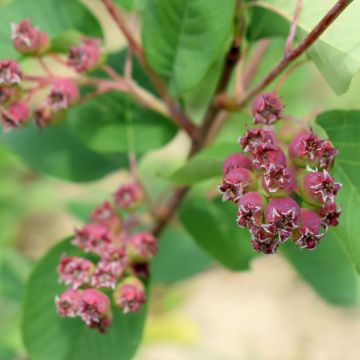
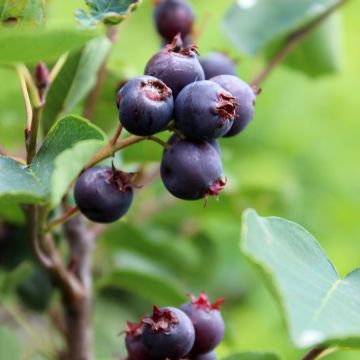
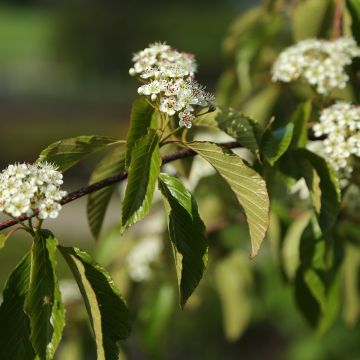

Comments